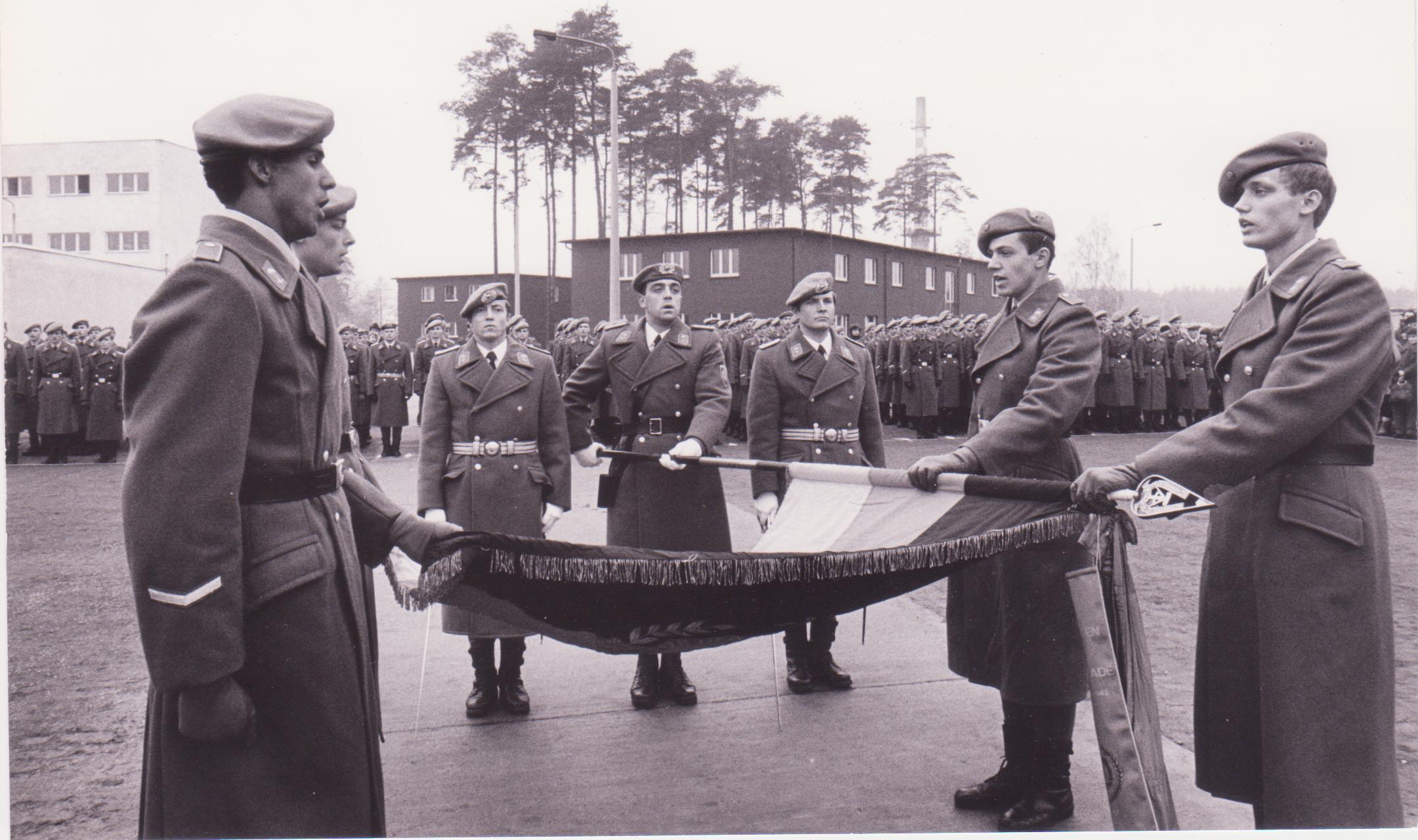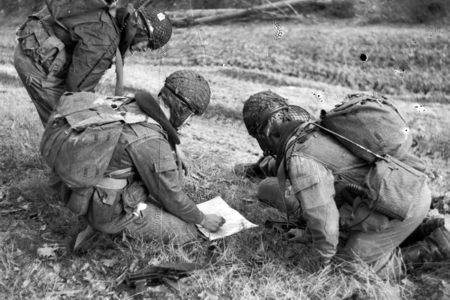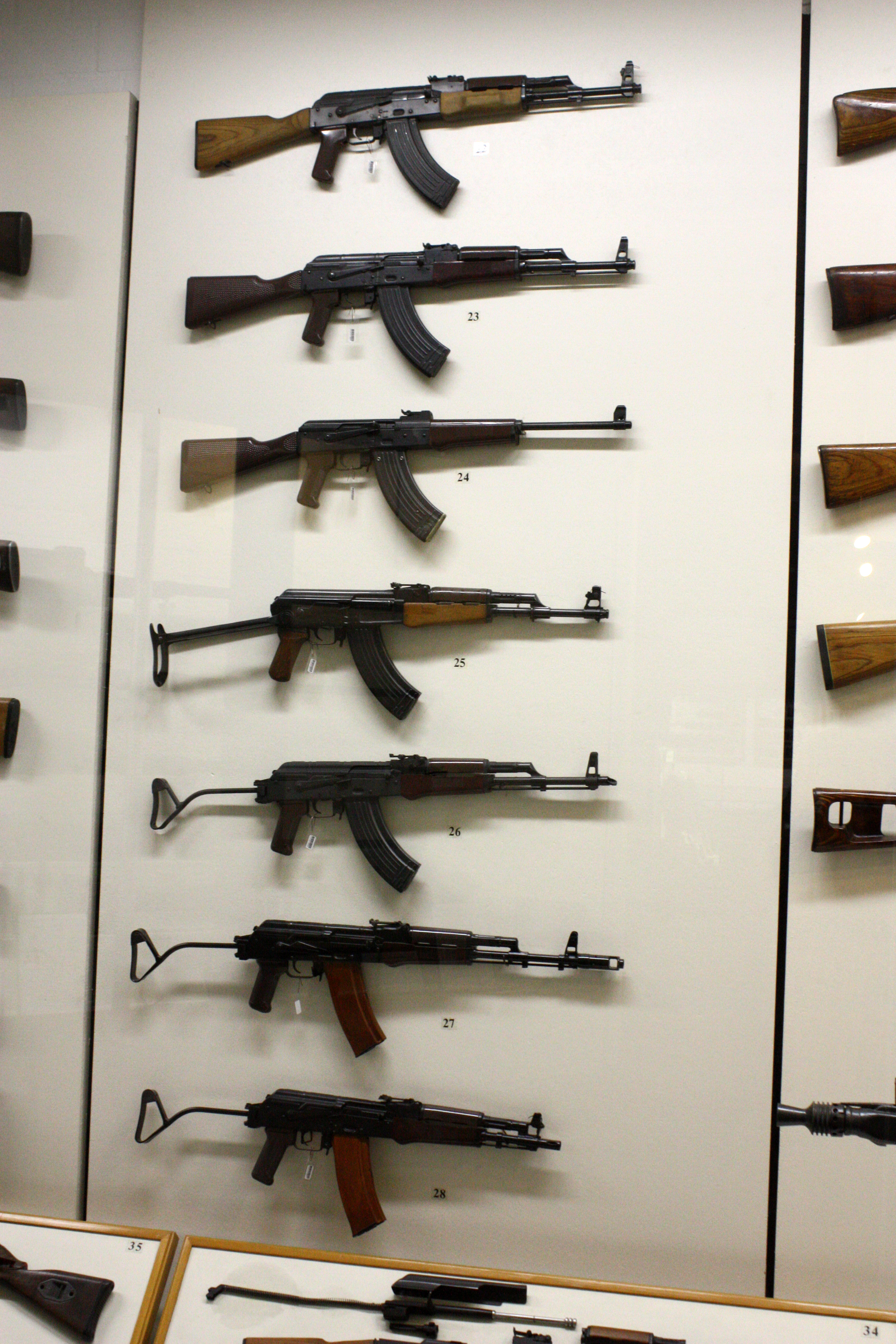Luftsturmregiment 40 on:
[Wikipedia]
[Google]
[Amazon]
The Luftsturmregiment 40 (LStR-40) "
 Luftsturmregiment 40 was formed on December 1, 1986 under the Order No. 96/86 of the Minister for National Defense and Order No. 30/86 of the Chief of Land Forces. It was stationed in the vicinity of the military training area on Lehnin near Potsdam, Germany. On October 3, 1990, the regiment was taken over by the West German
Luftsturmregiment 40 was formed on December 1, 1986 under the Order No. 96/86 of the Minister for National Defense and Order No. 30/86 of the Chief of Land Forces. It was stationed in the vicinity of the military training area on Lehnin near Potsdam, Germany. On October 3, 1990, the regiment was taken over by the West German 

 In keeping with the airborne and air assault capabilities of the unit, LStR 40 utilized only light weapons, usually standard gear from the main Land Forces of the NVA. Paratrooper-specific variations were used when available.
These included the RPG-7D, which was designed to be separated into two pieces for easier transportation, and the MPi-KMS-72 and MPi-AK-74NK, folding-stock models of the AKM and AK-74 respectively.
In keeping with the airborne and air assault capabilities of the unit, LStR 40 utilized only light weapons, usually standard gear from the main Land Forces of the NVA. Paratrooper-specific variations were used when available.
These included the RPG-7D, which was designed to be separated into two pieces for easier transportation, and the MPi-KMS-72 and MPi-AK-74NK, folding-stock models of the AKM and AK-74 respectively.
 To be deployed into combat in the event of war, Luftsturmregiment 40 depended upon the Luftstreitkraefte der NVA to provide it with helicopters for air assault insertions and fixed-wing aircraft for parachute jumps. The regiment trained with the Ilyushin Il-14, the Antonov An-2, Antonov An-8, Antonov An-12, Antonov An-22, Antonov An-26, and the Mil Mi-4 and Mil Mi-8.
The Luftstreitkraefte der NVA did not, however, actually possess enough aircraft or helicopters to move the regiment into combat all at once, meaning that the Soviet Air Force might have had to step in and make up for the shortage in the event of a war with NATO.
To be deployed into combat in the event of war, Luftsturmregiment 40 depended upon the Luftstreitkraefte der NVA to provide it with helicopters for air assault insertions and fixed-wing aircraft for parachute jumps. The regiment trained with the Ilyushin Il-14, the Antonov An-2, Antonov An-8, Antonov An-12, Antonov An-22, Antonov An-26, and the Mil Mi-4 and Mil Mi-8.
The Luftstreitkraefte der NVA did not, however, actually possess enough aircraft or helicopters to move the regiment into combat all at once, meaning that the Soviet Air Force might have had to step in and make up for the shortage in the event of a war with NATO.

 The regiment's last standard model of parachute was the RS 9/2A, with the BE-8 reserve chute. The L-10/2 ST and RL-12/2 ST parachutes were used for HAHO operations. Soldiers of the regiment were trained for HALO jumps as well, but conducted these jumps below the altitude where oxygen equipment would have been needed.
The regiment's last standard model of parachute was the RS 9/2A, with the BE-8 reserve chute. The L-10/2 ST and RL-12/2 ST parachutes were used for HAHO operations. Soldiers of the regiment were trained for HALO jumps as well, but conducted these jumps below the altitude where oxygen equipment would have been needed.
Willi Sänger
Heinrich Max Willi Sänger (; 21 May 1894 in Berlin, Germany – 27 November 1944 in Brandenburg, Germany) was a German Communist and resistance fighter against the Nazis.
Life
Willi Sänger, was the son of a carpenter. After school, he comple ...
" ( en, Air Assault Regiment 40) was a unit of the German Democratic Republic
German(s) may refer to:
* Germany (of or related to)
** Germania (historical use)
* Germans, citizens of Germany, people of German ancestry, or native speakers of the German language
** For citizens of Germany, see also German nationality law
**G ...
's National People's Army
The National People's Army (german: Nationale Volksarmee, ; NVA ) were the armed forces of the German Democratic Republic (GDR) from 1956 to 1990.
The NVA was organized into four branches: the (Ground Forces), the (Navy), the (Air Force) a ...
. It was formed in 1986 by expanding the existing Parachute Battalion 40 with additional air assault companies and support capability. It was directly subordinate to the Land Forces Command ( Kommando Landstreitkräfte) of the East German Army.
Although initially formed based on the parachute battalion, this unit had a different mission and organization. The Luftsturmregiment 40 came about as the result of a change in Soviet tactics based on their recent experience in Afghanistan. These tactics emphasized the more mobile warfare afforded by the use of helicopter air assault operations. While LStR 40 retained in full the airborne capability of its predecessor unit, more emphasis was placed on readiness to conduct air assault operations than had previously been the case.
Like its predecessor unit, Luftsturmregiment 40 carried the added title "Willi Sänger," in honor of a famed German Communist and resistance fighter against the Nazis.
History
 Luftsturmregiment 40 was formed on December 1, 1986 under the Order No. 96/86 of the Minister for National Defense and Order No. 30/86 of the Chief of Land Forces. It was stationed in the vicinity of the military training area on Lehnin near Potsdam, Germany. On October 3, 1990, the regiment was taken over by the West German
Luftsturmregiment 40 was formed on December 1, 1986 under the Order No. 96/86 of the Minister for National Defense and Order No. 30/86 of the Chief of Land Forces. It was stationed in the vicinity of the military training area on Lehnin near Potsdam, Germany. On October 3, 1990, the regiment was taken over by the West German Bundeswehr
The ''Bundeswehr'' (, meaning literally: ''Federal Defence'') is the armed forces of the Federal Republic of Germany. The ''Bundeswehr'' is divided into a military part (armed forces or ''Streitkräfte'') and a civil part, the military part con ...
. On March 31, 1991, it was disbanded by the German Federal Armed Forces Command East.
The Luftsturmregiment 40 never saw combat or deployment outside East Germany, except for Warsaw Pact
The Warsaw Pact (WP) or Treaty of Warsaw, formally the Treaty of Friendship, Cooperation and Mutual Assistance, was a collective defense treaty signed in Warsaw, Poland, between the Soviet Union and seven other Eastern Bloc socialist repub ...
training exercises. The events leading up to the Fall of the Wall saw the only "real" use of the Regiment. Due to the elite nature of the unit and the highly-restrictive selection process, its members were regarded as especially loyal and the unit as a whole was considered "politically reliable" by East German leadership.
As a result of the Monday demonstrations in Leipzig in November 1989, the Luftsturmregiment 40 and other selected units in the 1st Motorized Rifle Division were mobilized for possible deployment into the city.https://magazin.spiegel.de/EpubDelivery/spiegel/pdf/13684853 A few days before the announced Monday demonstration, several hundred members of Luftsturmregiment 40 were sent to Leipzig, and housed in local military barracks. This was done at night and under the strictest secrecy. The regiment was to be used to assist the police and special units of the Stasi Department XXII (Counterterrorism) to suppress the popular resistance.
Ultimately, the order to move in against the demonstrators was never given.

Training
Luftsturmregiment 40 paratroopers were known to be trained inKyeok Sul Do
Kyeok Sul Do (Hangul: 격술도) - also often romanized as Gjogsul - is a martial art created in Democratic People's Republic of Korea (i.e. North Korea) that is practised primarily in the Korean People's Army and its intelligence agencies.
...
by North Korean instructors in 1988.
Equipment
Uniforms
The uniforms of the regiment's paratroopers, like those of all the Land Forces of the NVA, were based on uniforms of the former Wehrmacht, adapted to Soviet uniform and equipment standards. In the early years they wore the field service suit for reconnaissance aircraft of the NVA. It consisted of a hooded jacket and trousers, both in camouflage on a blue-gray tone. Lace-up shoes replaced the usual boots, a leather cap replaced the steel helmet. In later years, the airborne helmet of the Polish paratroopers was introduced, which had earflaps.Weapons

Transport Aircraft
 To be deployed into combat in the event of war, Luftsturmregiment 40 depended upon the Luftstreitkraefte der NVA to provide it with helicopters for air assault insertions and fixed-wing aircraft for parachute jumps. The regiment trained with the Ilyushin Il-14, the Antonov An-2, Antonov An-8, Antonov An-12, Antonov An-22, Antonov An-26, and the Mil Mi-4 and Mil Mi-8.
The Luftstreitkraefte der NVA did not, however, actually possess enough aircraft or helicopters to move the regiment into combat all at once, meaning that the Soviet Air Force might have had to step in and make up for the shortage in the event of a war with NATO.
To be deployed into combat in the event of war, Luftsturmregiment 40 depended upon the Luftstreitkraefte der NVA to provide it with helicopters for air assault insertions and fixed-wing aircraft for parachute jumps. The regiment trained with the Ilyushin Il-14, the Antonov An-2, Antonov An-8, Antonov An-12, Antonov An-22, Antonov An-26, and the Mil Mi-4 and Mil Mi-8.
The Luftstreitkraefte der NVA did not, however, actually possess enough aircraft or helicopters to move the regiment into combat all at once, meaning that the Soviet Air Force might have had to step in and make up for the shortage in the event of a war with NATO.
Parachutes

 The regiment's last standard model of parachute was the RS 9/2A, with the BE-8 reserve chute. The L-10/2 ST and RL-12/2 ST parachutes were used for HAHO operations. Soldiers of the regiment were trained for HALO jumps as well, but conducted these jumps below the altitude where oxygen equipment would have been needed.
The regiment's last standard model of parachute was the RS 9/2A, with the BE-8 reserve chute. The L-10/2 ST and RL-12/2 ST parachutes were used for HAHO operations. Soldiers of the regiment were trained for HALO jumps as well, but conducted these jumps below the altitude where oxygen equipment would have been needed.
See also
* Fallschirmjägerbataillon 40References
Bibliography
* Karl-Heinz Dissberger u. a.: Vom Himmel auf die Erde ins Gefecht. Fallschirmjäger der Nationalen Volksarmee. 2nd Edition. Kabinett Verlag, Zürich u. a. 1999, . * {{commons category Airborne units and formations of East Germany Special forces of East Germany Military units and formations established in 1986 Military units and formations disestablished in 1991